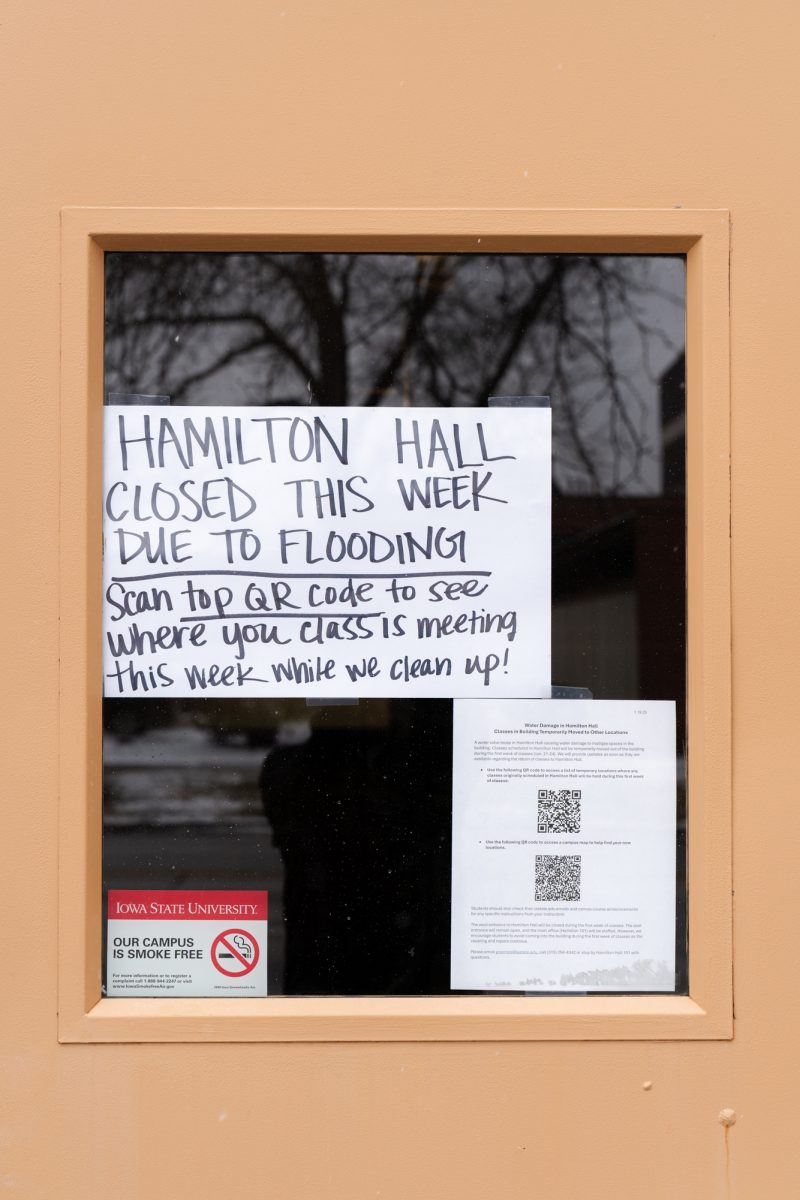Here’s the Daily’s lowdown on the top hip hop
September 4, 2002
Last week, I brought you the top hip hop albums from the different regions of the US. This week, I’m giving you the most influential hip hop albums (according to me) from 1989 to the present.
Drum roll, please.
Nas “Illmatic” (Columbia) 1994
The first opus from acclaimed artist Nas shook the hip hop scene in 1994 with the rapper’s poet delivery and stories of ghetto struggle.
This album was groundbreaking in hip hop because it helped give the East Coast its credibility back during the time everyone was on the West Coast vibe.
Many artists credit their reason for getting into hip hop to “Illmatic.” Nas presented the whole aspect of hip hop’s deeper poetic side.
With production from Large Professor, tracks like “The World is Yours,” “It Ain’t Hard to Tell,” “N.Y. State of Mind,” and “One Love,” Nas rocked everyone’s radio in 1994.
2Pac “Me Against The World” (Interscope) 1995
The third album from hip hop’s most controversial artist displayed a wide array of emotions in 2Pac. “Me Against the World,” like many of 2Pac’s albums, displayed the pain, love, anger and happiness of many urban youths.
“Me Against the World” wasn’t the most poetic album, neither was it lyrically groundbreaking, but it was a REAL album. You could hear ‘Pac’s words of struggle and totally be able to understand what he was trying to convey.
2Pac was an artist who got straight to the point and made the listener feel it. Tracks like “Dear Mama,” “So Many Tears,” “Temptations,” and the title track “Me Against the World” uttered so many feelings that ghetto youth and non-ghetto youth could be instantly be drawn to.
The Notorious B.I.G.
“Ready to Die” (Bad Boy) 1994
Brooklyn’s own Notorious B.I.G., aka “Biggie Smalls,” rocked the airwaves of both East and West coast hip hop heads alike in late 1993 (during the East Coast comeback). “Ready to Die” showed the world through an eyes of a man struggling, doing what he had to in order to survive.
Biggie’s wordplay, delivery and flow were next to none, paired with the cleverest lyrics the game of hip hop has ever seen. He introduced us to the guy “who went from ashy to classy.” On “Ready to Die,” Biggie captivated his audience by staying true to himself but still making people want to get on the dance floor.
Tracks like “Everyday Struggle,” the sultry jam “One More Chance,” “Juicy,” and the club anthem “Big Poppa” showed this MC could still stay street while still making heads bob.
Snoop Doggy Dogg
“Doggy Style” (Death Row) 1993
Snoop’s first album after being introduced to the world on Dr. Dre’s “The Chronic,” showed his bark did have some bite. Snoop helped usher in the whole West Coast movement, when everything that was coming out of the West Coast was golden.
With his smooth delivery and vivid lyrics, audiences of 1992 were drawn to Snoop. He had the ability to mesh well with the production of Dr. Dre and Daz of the Dogg Pound. Snoop’s album was a crossover hit that showed validity to hip hop.
Everyone loves tracks like “What’s My Name?,” “Gin and Juice,” and “Doggy Dogg World.” Snoop’s album kept us all consistently wanting to be a “West Coast rider.”
Outkast “Aquemini” (LaFace) 1998
One of the most experimental albums of our time is Outkast’s “Aquemini.” After already releasing two critically acclaimed albums, Outkast took hip hop to another level. “Aquemini” was far ahead of its time in lyrics, concept, and production.
Throughout the album Andre 3000 and Big Boi were able to mesh great music with poetic lyrics. The two MCs had already helped usher in the breaking of the stereotype that artists from the South can’t rap, but they took it to another musical level with “Aquemini.”
Great tracks like “Rosa Parks,” “Skew it on the Bar-B,” “Return of the G,” and the title track “Aquemini” were filled with overlaying poetic messages. “Aquemini” was an album that expanded the mind of hip hop lovers everywhere in 1998 and displayed Outkast’s ability to think outside the box.
Dr. Dre
“The Chronic” (Death Row) 1992
The first solo album from the great NWA producer since the group’s breakup was the very first crossover hit album in hip hop history. There is not one person in this world who can’t quote lyrics from tracks like “Ain’t Nothin But a G Thang,” “Dre Day,” or “Let Me Ride.”
Dr. Dre’s production on this album was second to none. This album also introduced the world to Snoop Doggy Dogg and the Dogg Pound. Dre’s album also took away attention from the East Coast-dominated mindset – that only great albums were coming out of the East. It made the world recognize the West Coast had great lyricists too.
One can’t forget Snoop’s beginning delivery on “Ain’t Nothin’ But a `G’ Thang.” “One, two, three, and to the Four/Snoop Doggy Dogg and Dr. Dre is at the door.”
Wu-Tang Clan “Enter the Wu-Tang (36 Chambers)” (Loud/RCA) 1993
The last album in the East Coast trilogy that brought competition to the West Coast sound is Wu-Tang Clan’s “Enter the Wu-Tang (36 Chambers).” Wu-Tang Clan affected hip hop in a big way, starting a whole new cult of “Wu-heads.”
This group, consisting of nine members, showed how rugged and raw the East Coast still was. The album also introduced the world to some great solo artists such as Method Man, Ghostface Killah, Raekwon, RZA, and the slaphappy Ol’ Dirty Bastard. 36 Chambers also featured great in-house production, and the album’s coherent and diverse lyrics fascinated hip hop audiences everywhere.
Street bangers such as “Protect Ya Neck,” “C.R.E.A.M.,” and the “Mystery of Chess-boxing” showed audiences a grimier side to life.
Common Sense
“Resurrection” (Ruthless) 1994
The first artist to earn critical acclaim out of the Midwest was Common Sense. His albums displayed to both coasts that there were MCs with great lyrics harboring in the Midwest too.
Common gave his listeners a tour of the thoughts of a Midwestern boy and the streets he walked on. “Resurrection” also presented a artist looking introspectively into his own life and trying to find the meaning in it.
One of the most introspective tracks in hip hop is “I Used to Love H.E.R..”
On this song, Common uses the metaphor of a woman to compare his love for hip hop and his thoughts of his progression and regression of the music. Common also gave listeners more thought-provoking tracks such as “Book of Life,” and “COMunism,” and the title track “Resurrection.”
Jay-Z “Reasonable Doubt”
(Roc-A-Fella/Priority) 1996
Before Jay-Z became the most popular rapper of today, he was a swaggering, clever, and lyrical MC. Reasonable Doubt displayed the idea of pure hustler and Jigga’s thirst for power, woman, and money.
His colorful lyrics and great delivery portrayed almost every ghetto boy and girl’s wants and desires.
Though mostly overlooked by hip hop heads at the time, “Reasonable Doubt” today is the virtual Old Testament for any Jay-Z fan. Polished songs such as “Can’t Knock the Hustle,” the Biggie duet “Brooklyn’s Finest,” and “Politics as Usual” showed this MC’s confidence and arrogance on the mic was well-deserved.
A Tribe Called Quest “Midnight Marauders” (Jive) 1993
The third release from A Tribe Called Quest solely portrayed the lyricists Phife Dogg and Q-Tip as heads above the others.
Their great depiction of regular life and fun times was shown throughout the album.
Q-Tip’s slick delivery combined with Phife Dog’s hilarious lyrics make this album good to go from the beginning. Songs such as “Award Tour,” Electric Relaxation,” and “Turn the Party Out” kept people bobbin’ their heads from coast to coast.






